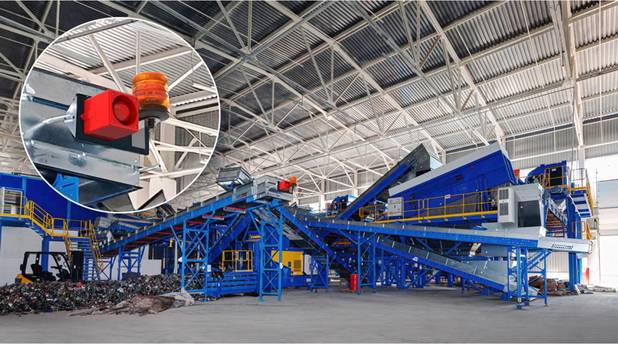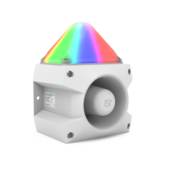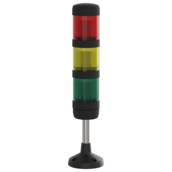The ideal signaling products for recycling machines & plants
In recycling plants, there are many different areas with potential dangers. In order to minimize the risks of damage to machinery and people, suppliers of machinery must equip their machines with devices that provide suitable safety-related information. This also includes safety-related signaling devices.
Special safety regulations apply to recycling machines and equipment in industry and construction. An audible or visual danger signal must be mounted as a warning sign before the machine starts up. An acoustic warning signal must go off that gives the people in the vicinity enough time to build up a sufficient safety distance. During the duration of the acoustic signal, a visual signal must also serve as support.

As a leading manufacturer of signaling devices for industries, Pfannenberg offers visual, audible and combined signaling devices for indication, warning and alarming. In addition, we offer exactly the right solutions, such as SIL or Ex-ATEX products, which are required for compliance with normative requirements. Pfannenberg provides a wide portfolio of signaling devices for status indication of recycling machines and plants, which are indispensable for a smooth production process. To enable machine operators to react quickly and correctly to malfunctions, it is important that the machine status is clearly indicated and can also be easily recognised visually from a greater distance.
For an optimal solution Pfannenberg has developed the smart 3D-Coverage method. This makes it possible to identify and document the best possible signaling solution for projects. Based on product parameters and the environmental conditions, a three-dimensional space is determined in which it exactly meets the requirements of a customer application. This gives our customers the knowledge of how many and which signaling devices they need to use. Like this, Pfannenberg provides the best possible support to simplify the planning and at the same time avoid costly and time-consuming errors in planning.



